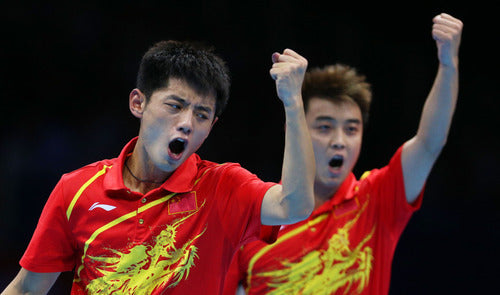
8 Pingpong Essentials to Be the Very Best (…Like No One Ever Was)
Admit it, you’ve been bitten by the Pokémon Go bug too, but that’s no reason to slack off on training… table tennis training that is. We may love our Dragonites, but table tennis will always be our true love. Here are 8 essentials that all players, whether aspiring, beginning, or intermediate, need to up their game!
The right racket and rubber combo
As a warrior does not wage war without a sword, a player does not play without a paddle. Depending on your playing style, you should look for rubbers and a racket that suit you. Please look forward to a more comprehensive list about this in the future. The type of the blade will be listed on the racket packaging itself, so just look out for these short-hand forms:
- Offensive (OFF-, OFF, OFF+)
- Defensive (DEF)
- All-round (ALL-, ALL, ALL+)
While the rubbers are classified into one of the below:
- All-round / counter-attacking style
- Offensive
- Defensive
Players only develop a very particular playing style when they have mastered the sport, so most players go with an all-round rubber + racket combination at the beginning.
As a beginning player, you will probably be unfamiliar with playing styles, but a professional table tennis facility will be able to help you determine the best rubbers + racket combination for you.
The right shoes
People may underestimate the importance of agile feet—“It’s not like a basketball court or a tennis court, it’s just a table” (yeah, right)—but players know that footwork is key. Having fast feet is one of the most essential aspects to winning in table tennis, and the right shoes can make or break your footwork.
Choosing sports shoes is a process that is much like any other shoe-shopping experience. One usually looks for comfort and quality. But unlike shopping for heels or boots, you should probably take into account the following when you’re choosing a pair of pingpong shoes:
-
Comfort
When you’ve been doing a many-balls table drill for twenty minutes straight, you will no longer care that the shoes on your feet are not in the color or style that you wanted. What matters is that you feel comfortable wearing it.
It’s also important to wear in shoes before using them in a tournament; sore feet on top of pressure is not a good combination.
-
Shock absorption
The thickness and hardness of the sole is important, seeing as it’s what your feet will be landing on with every movement.
-
Weight
It’s a generally accepted statement that lighter things move faster. Without the added weight on your feet, you’re sure to improve the speed of your steps.
-
Grip
Not all playing floors are rubberized. If you want to avoid slipping and injuries, it’s best to go with shoes that have a nice rubbery grip to them. You’d be surprised at how slippery some shoes can be!
The right ball
There are many types of balls in the market. It’s important to know that, as of July 1, 2015, the old celluloid balls have been replaced by poly balls. The difference between the two is palpable.
When training competitively, we highly recommend you use the ball that will be used in tournaments, as this can make a lot of difference for a player, with respect to both how hard to hit the ball and how much spin to brush it with.
Gym time
Though you may argue that table tennis does not require as much gym time as, say, volleyball or weight-lifting, a player can reap innumerable benefits from lifting a few weights, running a few laps, and doing some core exercises.
Especially useful are ladder drills to improve footwork and core-strengthening exercises to improve stability, balance, and body strength.
Yoga can help massively as well, as it helps strengthen the core and can even help you control stress and pressure (something all players will need when facing an intense match.)
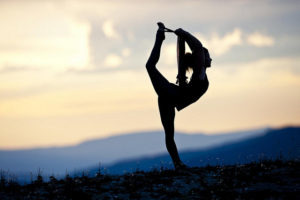
Source: Purity Health and Wellness
Healthy lifestyle
Table tennis is a sport that requires endurance. Do you think these players could have pulled off such long counter rallies if they were out of breath by the second or third ball? From someone who gets short of breath while jogging, I can personally tell you that if you have a below-average amount of stamina, leading an unhealthy lifestyle will NOT help. Eat healthy, drink a lot of water to prevent dehydration, cultivate healthy habits, avoid unhealthy ones, and train a lot: these will all help you up your game.
Commitment
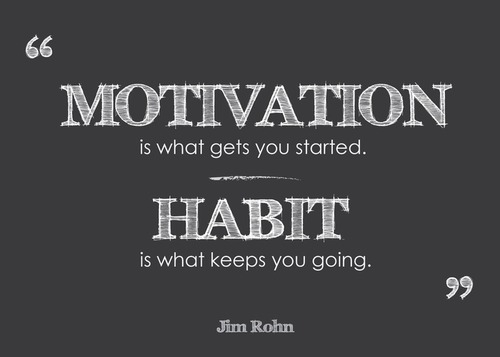
What is commitment? I once knew somebody who, having left his shoes at home, trained barefoot. Yes, you read that right: he trained for over an hour with bare feet. This is not recommended (see #2 above), obviously, but that was truly a prime example of commitment. Of course, you don’t have to train without shoes to show commitment, you just have to:
-
Show dedication by showing up.
As simple as it sounds, simply showing up can speak volumes about your commitment to something. Your presence is already you winning half the battle. Of course, presence here is not limited to the physical, but to the emotional and spiritual as well. What’s the point of showing up at training if your mind is somewhere else (like playing Pokémon Go)? You can go through the motions but if you don’t pour your heart into it, the lacking intent will come back to bite you in the ass during tournaments and match plays.
-
Do some research on your own time.
The internet exists for more than just animal videos or Facebook. YouTube has a plethora of instructional videos on different aspects of table tennis, as well as videos of professionals during games and tournaments. It’s worth checking out their gameplay—maybe you’ll even pick up a technique or two while watching. Or you can subscribe to our newsletter to get the latest tips and tricks to up your table tennis game!
-
Practice even if it’s not training time.
No coach? No teammates? That’s an excuse for the lazy. As long as you have a table, a racket, and / or balls, there are tons you can do to up your game, such as:
-
Service practice
Try to perfect a particular serve, aiming at a specific spot on the opponent’s side, or even just mastering the high toss!
-
Paddle-bouncing drills
Forehand, backhand, forehand-backhand, against the wall- the combinations are limitless! You can even challenge yourself by setting a particular number that you have to reach and increase it after you’ve reached it.
-
Footwork drills or shadowing
And so much more! Even without a fellow player, don’t take the lazy route if you really want to improve.
A good coach
A good coach makes all the difference. Yes, you can train by yourself or train with a teammate or playmate, but having a coach who can supervise, guide, and watch over you while you play will help.
It’s much like when you’re playing in a match: you may be too immersed in the game to notice your weak points, how to correct them, or how to take advantage of your opponent’s weak points.
A good table tennis coach is someone who can guide you, correct your form, and prescribe appropriate drills and training regiments to suit your particular playing style or strengths and weaknesses.
A well-equipped training area
Though there are many athletes who do not allow their circumstances to define them, (Refugee Olympians! #Respect) a well-equipped training area is highly beneficial to any player who wants to train competitively. A training area should ideally:
-
Be spacious
Every player knows movement is key, and without the space to train, it may be difficult for one to improve.
-
Have rubber flooring
Slippery floors and non-grip shoes are the worst combination, trust us on this.
-
Have ITTF-approved tables
Again, the circumstances do not define the player, but as with one’s racket and rubbers, training competitively on an ITTF-approved table instead of, say, just any wooden surface, makes a huge difference.
-
Have open airflow and a water dispenser
While training, it is important to keep your body hydrated and well-ventilated. Your body will already be working overtime as you move to hit those shots, so having enough oxygen and water will most likely prevent any fainting spells. (Yes, I’ve seen it happen.)
Conclusion: Like no one ever was!
So there you have it—8 essentials on how to up your pingpong game. Let us know in the comments below if they have been helpful for you in improving your skills!

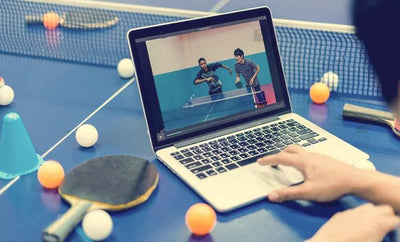


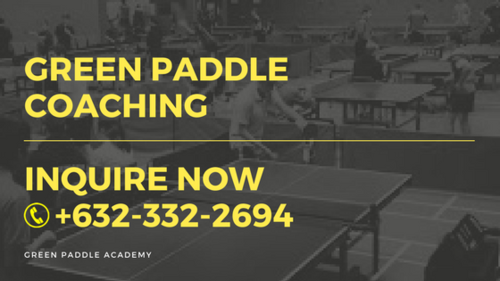
Comments
Leave a comment